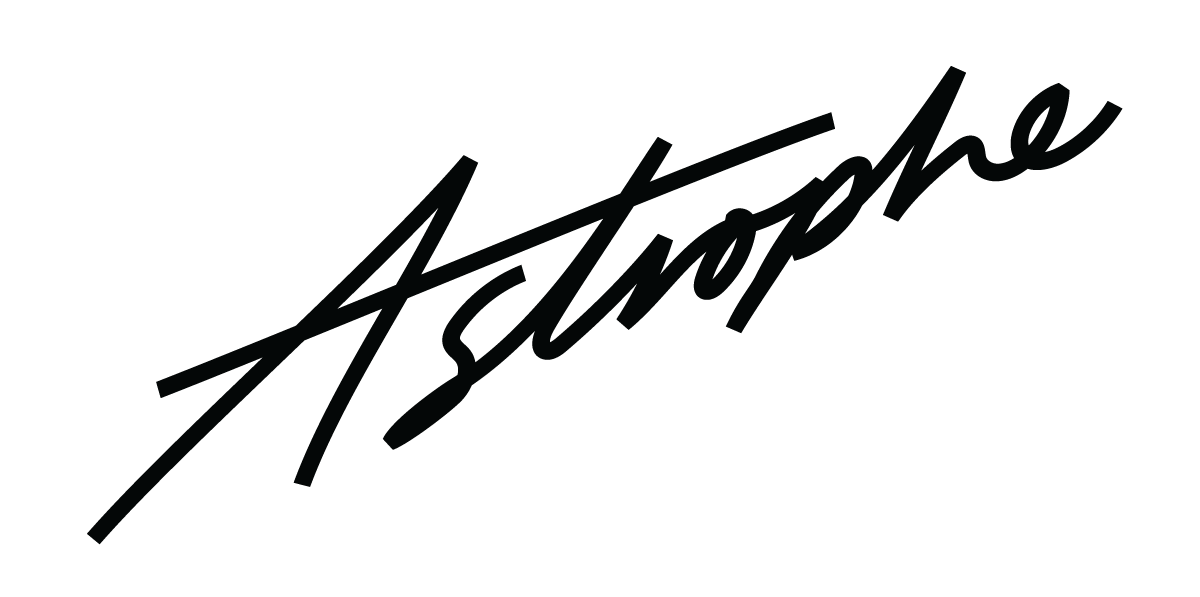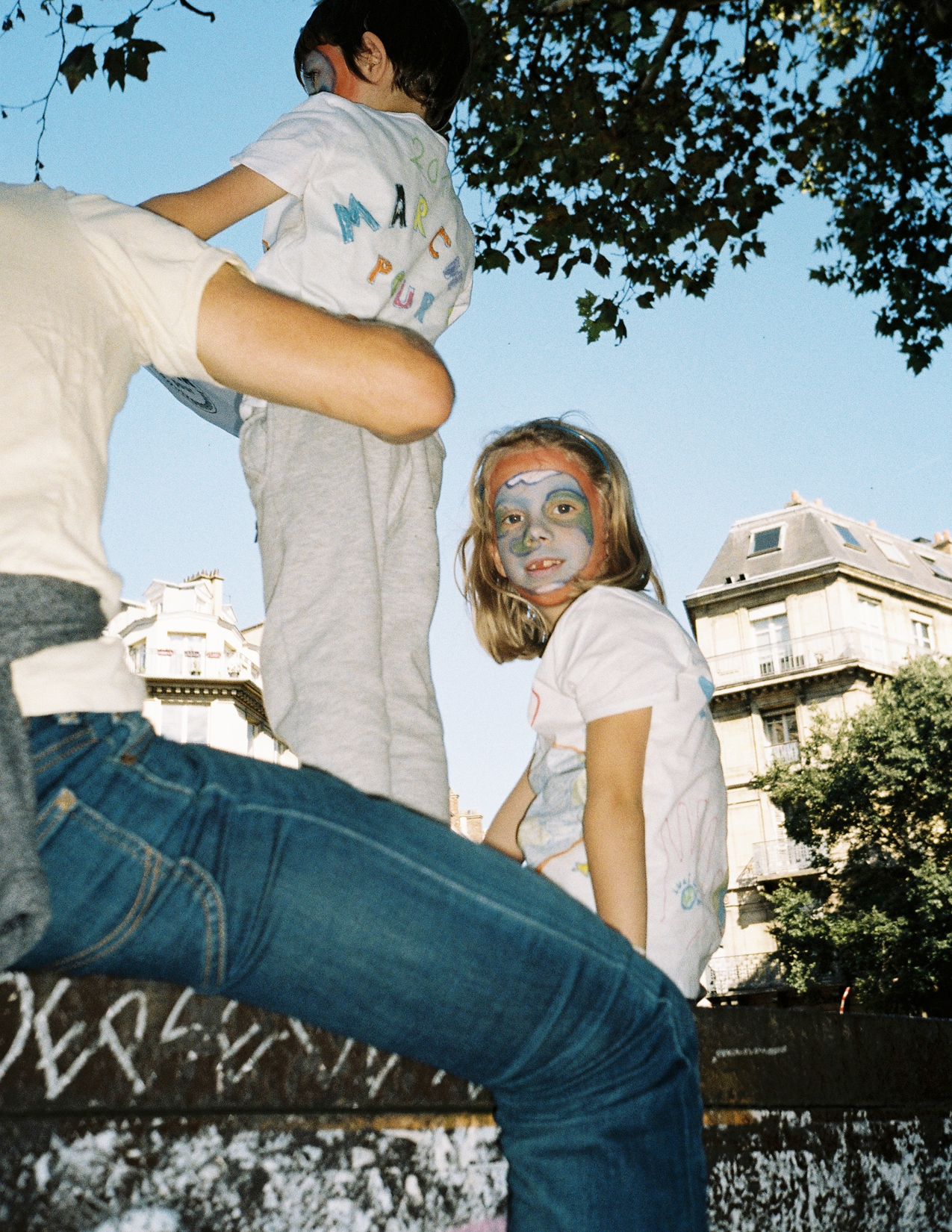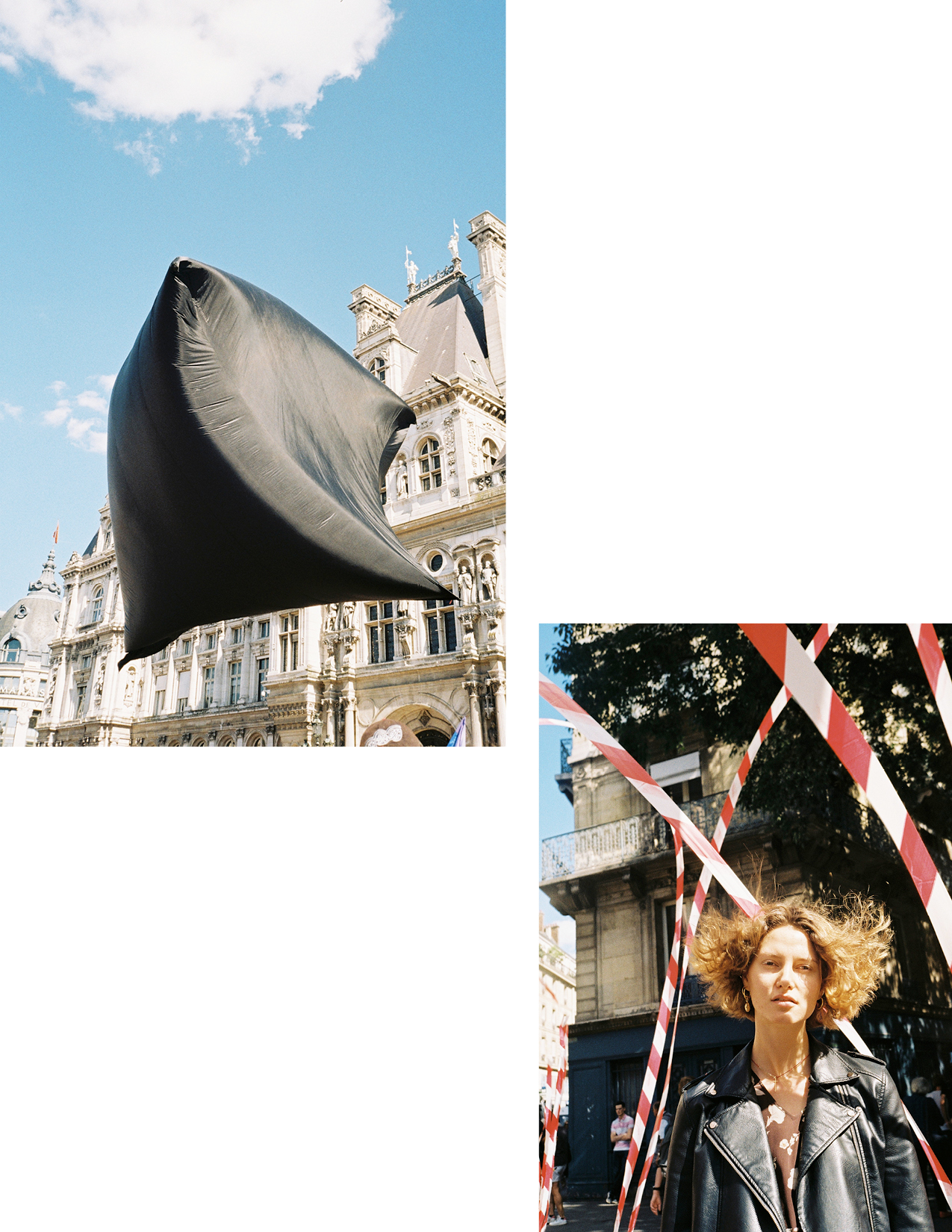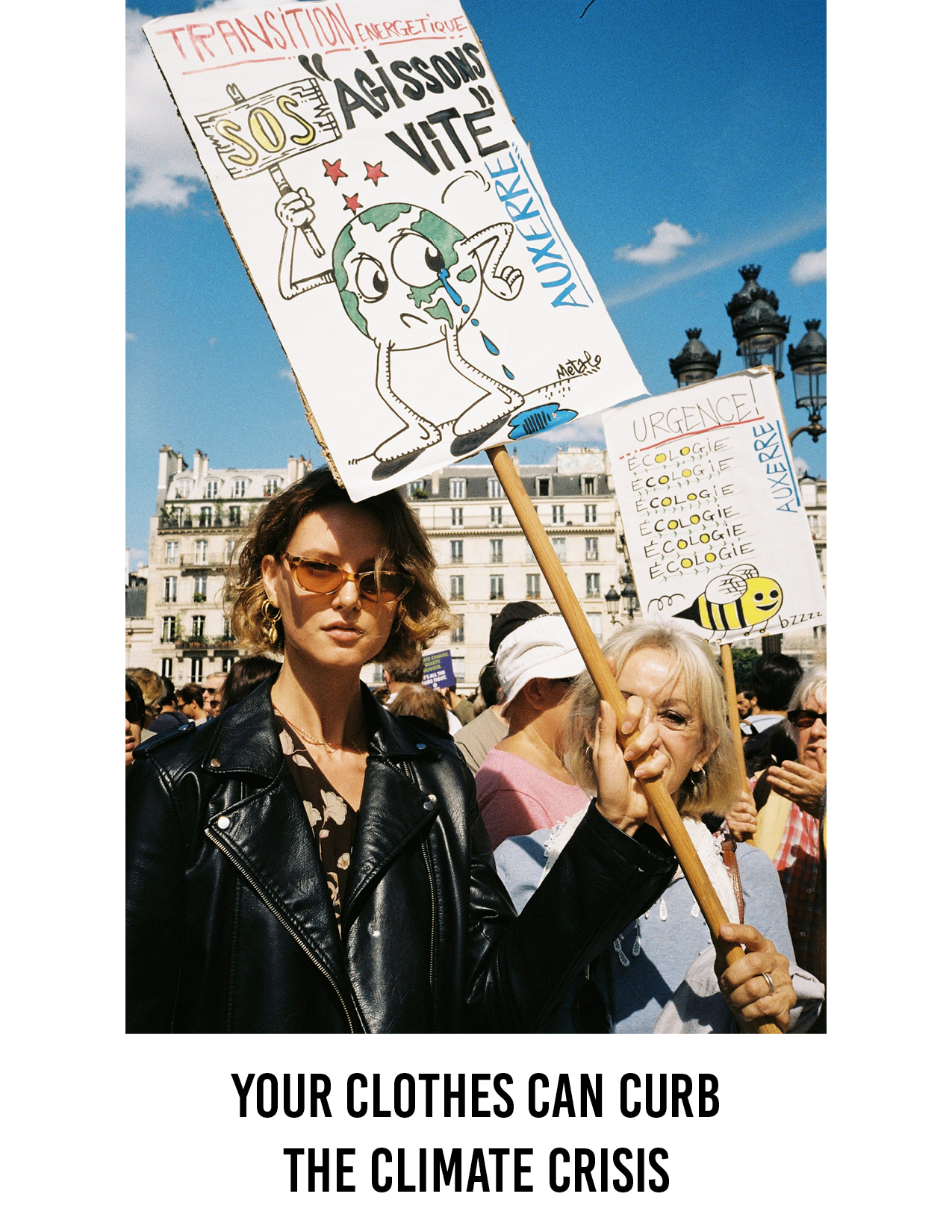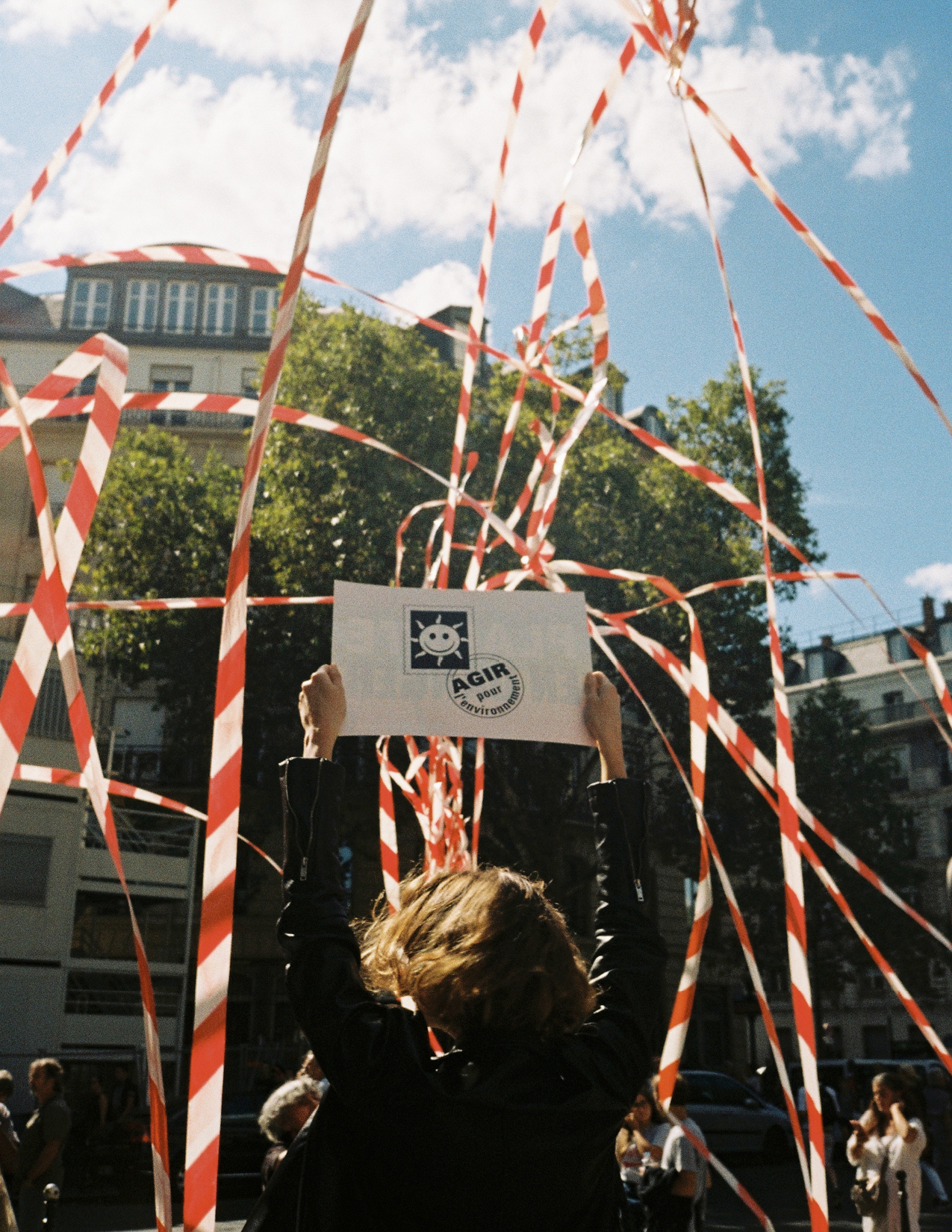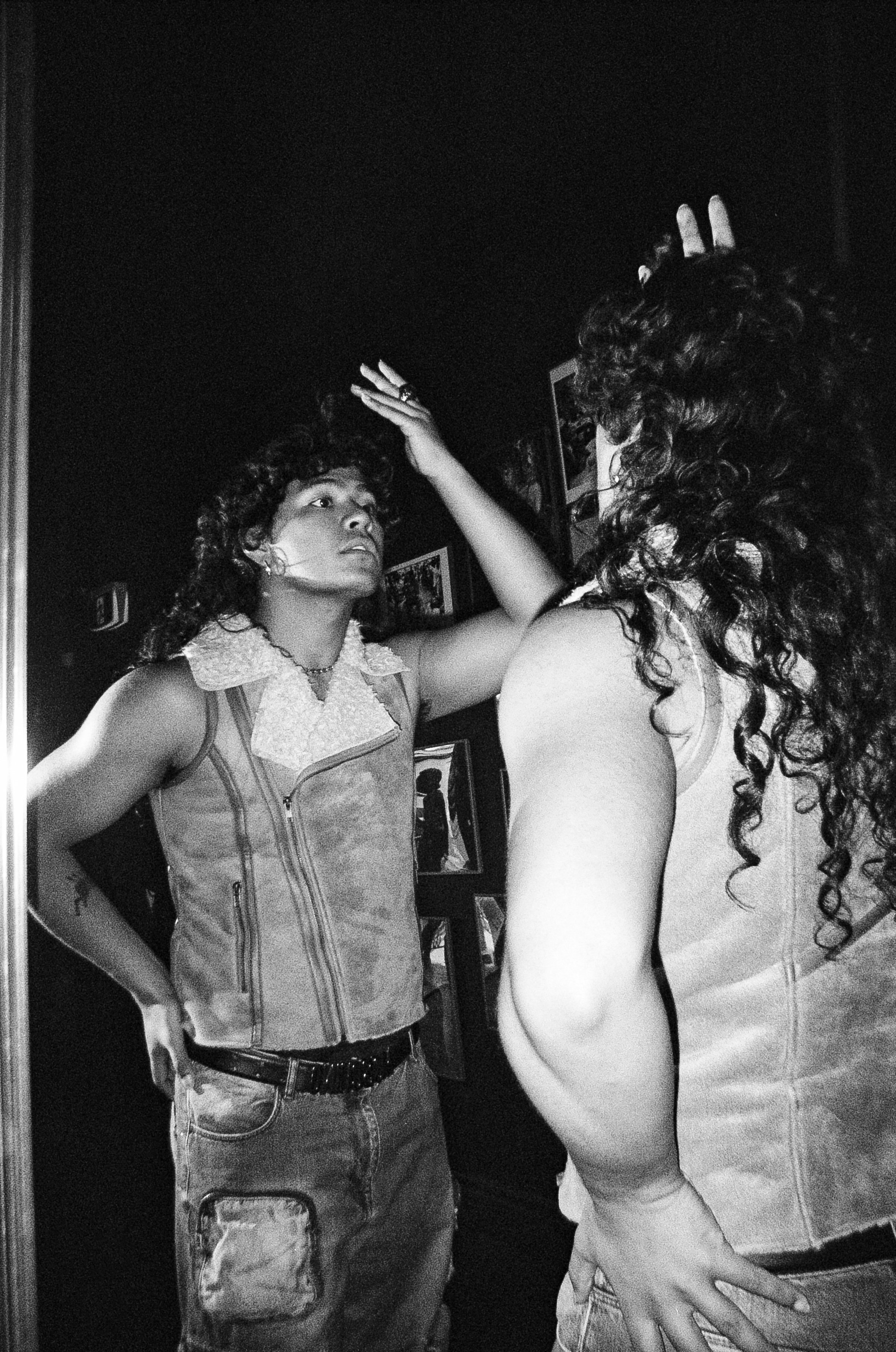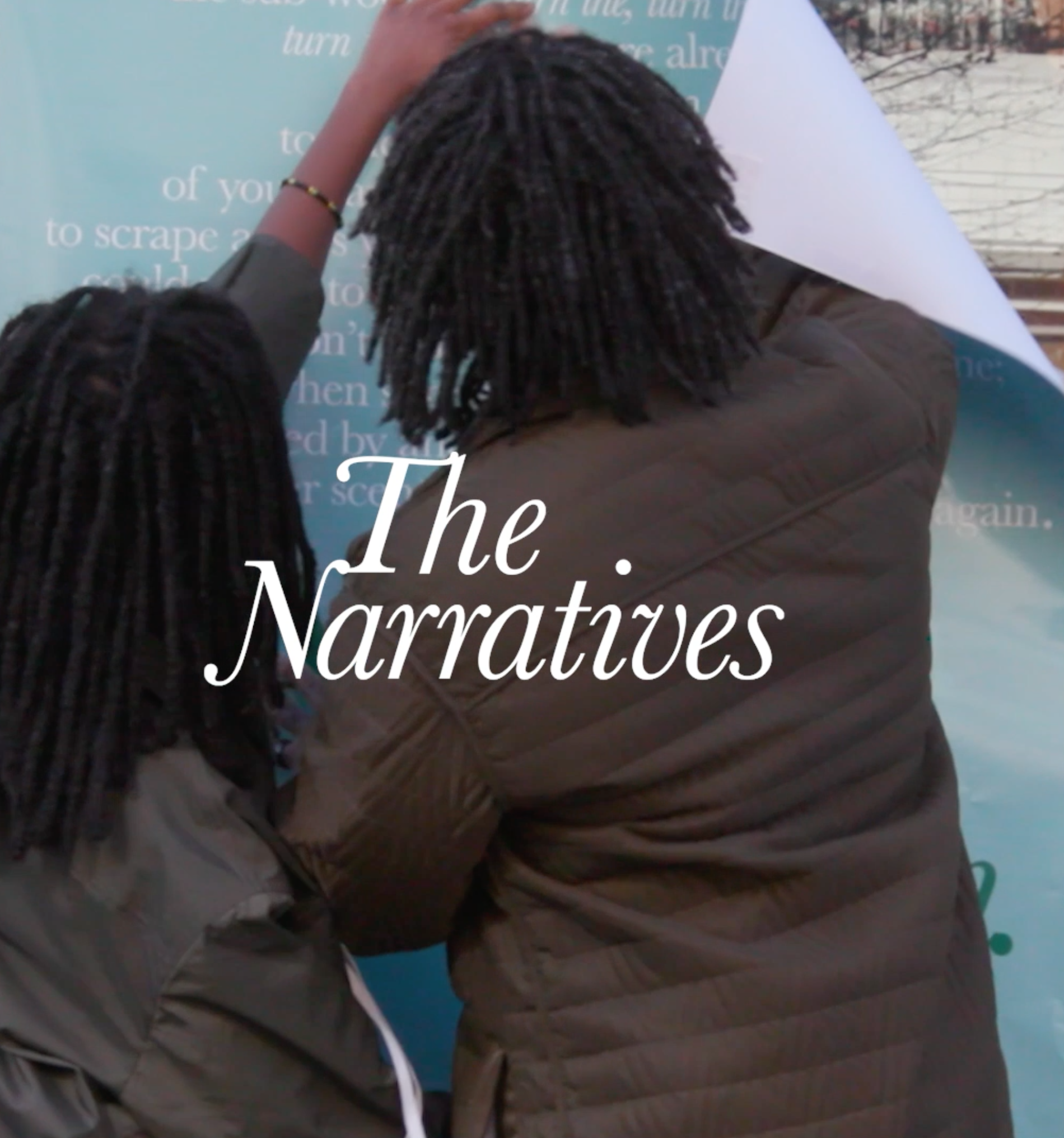YOUR CLOTHES CAN CURB THE CLIMATE CRISIS
We teamed up with creatives Laura Gavrilenko, Kate Shumak & Emma Håkansson of Willow Creative Co to discuss the climate crisis & what we can do play our part.
Images of Laura Gavrilenko at Marche Pour le Climat by Kate Shumak, words by Emma Håkansson, founder of Willow Creative Co
We’re in the midst of a climate crisis. Global carbon emissions have increased by almost 50% since 1990 and they’re causing temperature rise. This temperature rise is leading to more extreme and unpredictable weather, natural disasters, shrinking sea ice and rising sea levels. These changes effect wild life, effect all humans, but especially those living in so called ‘developing countries’ in lower socio-economic statuses.
We are in the midst of the sixth mass extinction of plants and animals, losing species at up to 1,000 times the ‘usual’ background rate of one to five species a year.
We are set to see near fishless oceans by 2048, and microplastics in the ocean outnumber stars in our galaxy – by over five hundred times.
It’s scary right now. 2040 is considered crisis time if we don’t act now. Luckily, there are things we can do.
As the most tangible and crucial contribution to our environment’s deterioration exists on our own body, let’s look at fashion. We consume 400% more clothing than we did just two decades ago. Because there is an abundance of cheap (unethically made) clothing available, fashion is more often seen as disposable and every ten minutes, six tonnes of clothing is sent to landfill in Australia.
The materials we make our clothes from are also hugely problematic for the planet. With the rise of synthetics we’ve seen the rise of the aforementioned microplastics. To produce enough conventional cotton for a pair of jeans you need almost 5,556 litres of water. Government reports show 22,000 cubic meters of environmentally hazardous waste being dumped into the river Buriganga everyday in Bangladesh for leather tanning. One third of New Zealand’s greenhouse gas emissions come from sheep raised for wool and meat.
What can people who love fashion, but who don’t want to see the end of the world do, to reduce their impact?
Buy less. It’s been found that the average Australian woman wears only 33% of her wardrobe anyway, and clothing always has a steep foot print.
Buy better. Buy ethically made. Buy locally made. Buy plant-based clothing that will biodegrade. Buy clothing that has been recycled out of waste. Buy upcycled and reworked garments. Buy vintage. Buy second-hand!
Love what you have. Look after it, wash it only as you need, on a low temperature and with care. Air dry. Mend and stitch up your clothes so you can keep wearing them.
Stop buying animal materials. The Global Fashion Agenda found cow leather to be the number one most impactful material to produce. Silk was second, and wool was fifth. These materials also kill animals (yes, even wool) and we don’t need to do that.
Speak to the designers, brands, stores and publications you love. Encourage them to do better, tell them sustainability and ethics matter, and that now is the time for us to be improving the way we exist within the fashion sphere, for the sake of the planet.
If you want to learn more about fashion and the environment, watch The True Cost, read This Is A Good Guide, have a look at Good On You, the Global Fashion Agenda, Eco Age and the Ellen MacArthur Foundation.
It’s worth noting that sadly much of the sustainable fashion world doesn’t speak nearly enough to the importance of removing animal agriculture, an industry which is responsible for more greenhouse gas emissions than the entire transport sector. I’m trying to address that though, and you can read some more of my articles on these topics.
Click here If you would like to donate to this cause.
